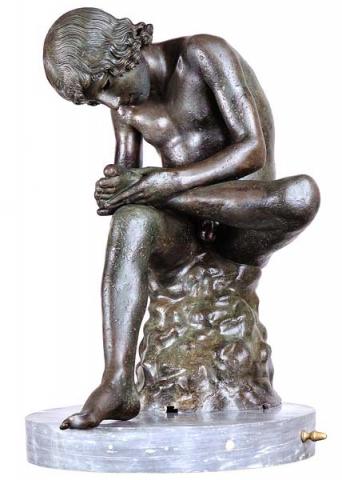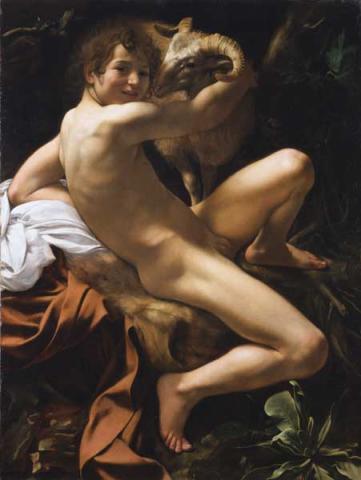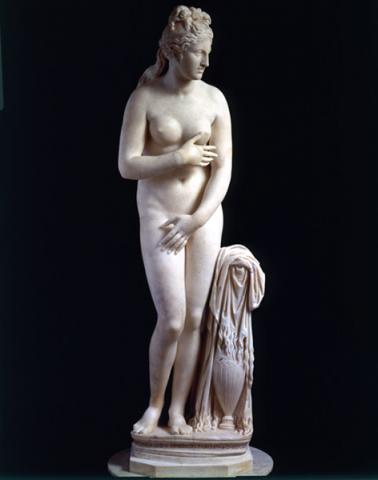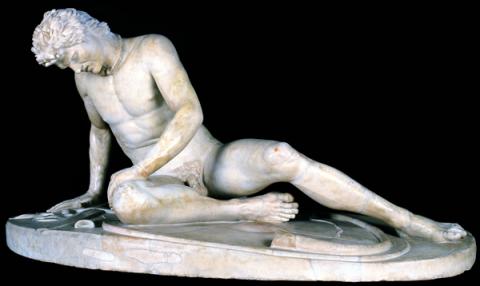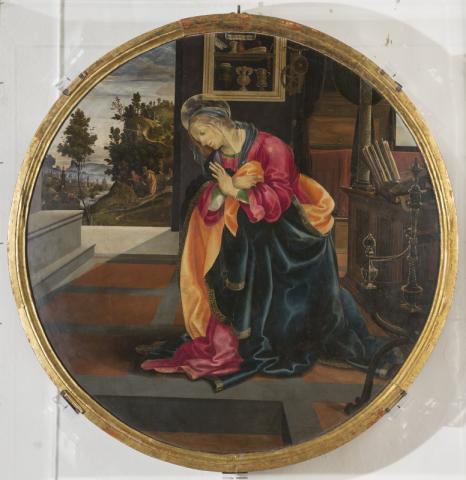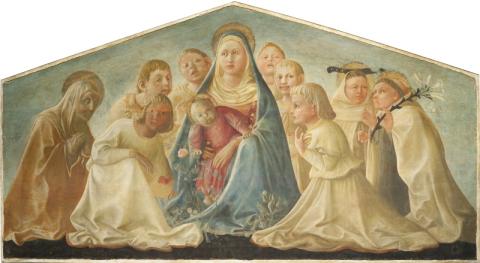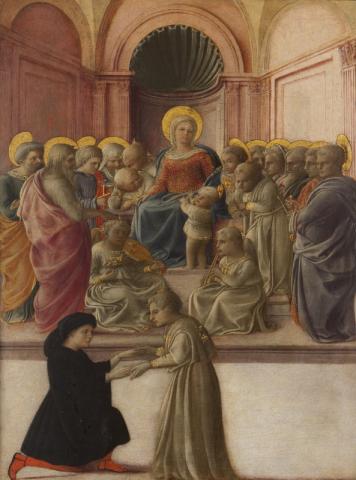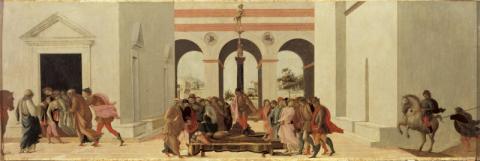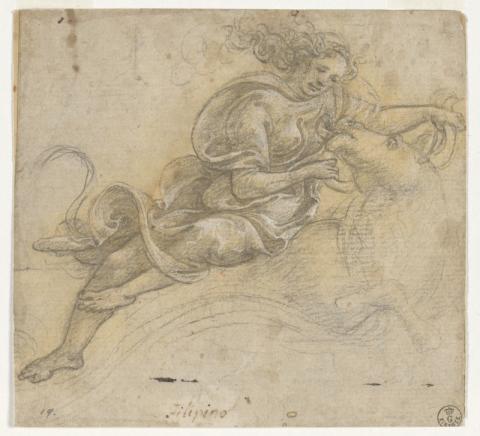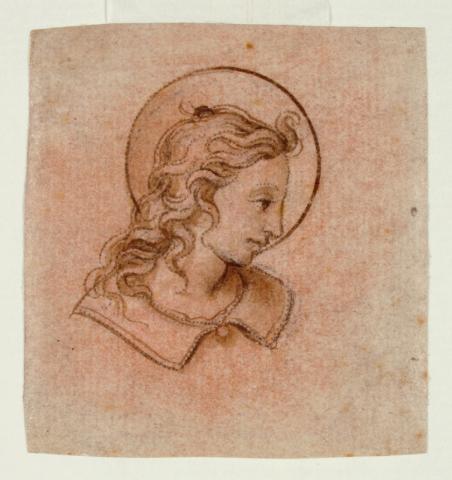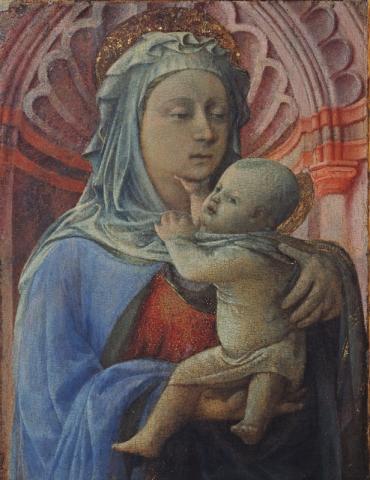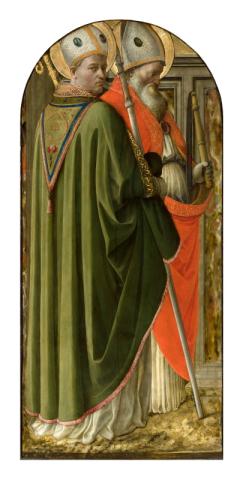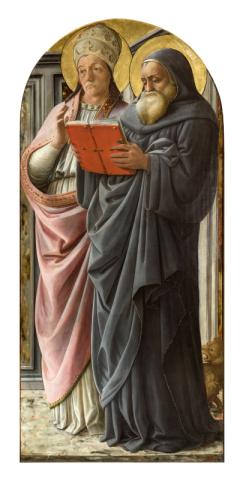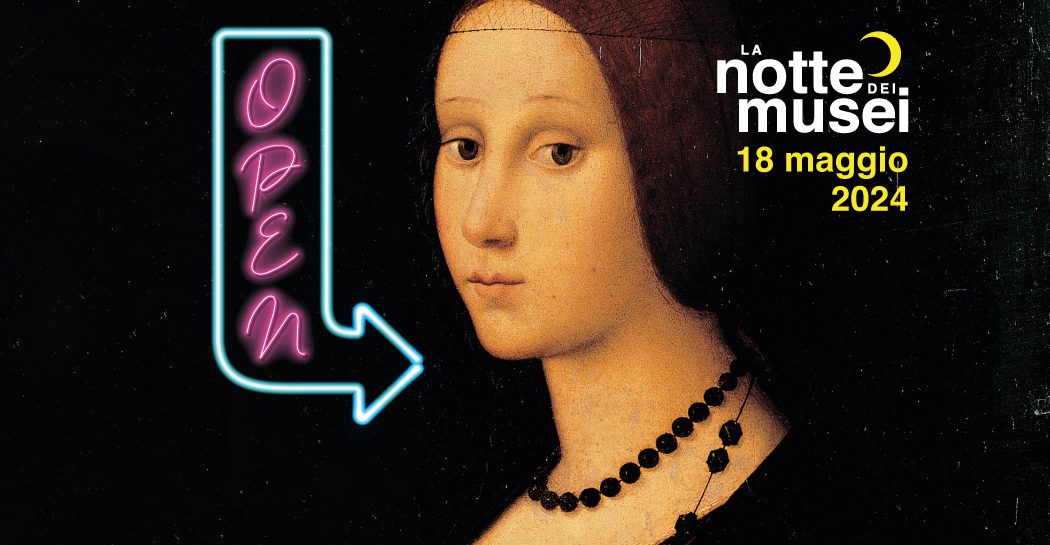Filippo e Filippino Lippi. Ingegno e bizzarrie nell'arte del Rinascimento
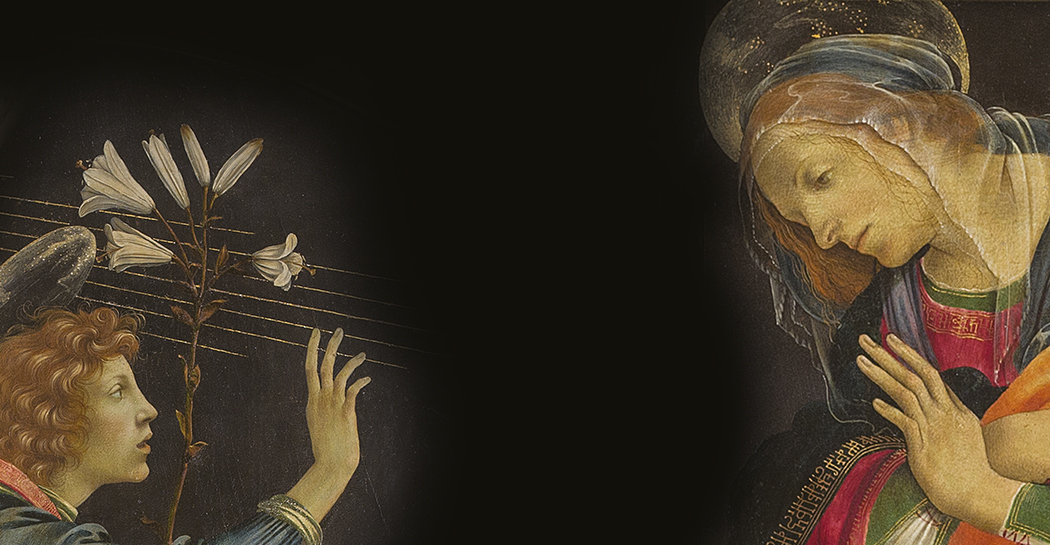
The exhibition portrays the talent of his father, one of the most important artists of Cosimo de' Medici's season in Florence, and that of his son, who inherited his father's genius and became
the interpreter of taste in late 15th-century Rome.
The extraordinary story about a father and son, who were both painters and illustrators of exceptional talent, is the main character at the Musei Capitolini in the halls of the Palazzo Caffarelli.
The exhibition, organised by Claudia La Malfa, is designed to explain, with a selection of paintings, drawings and archive documents, the talent of the Florentine painter Fra' Filippo Lippi (Florence 1406-Spoleto 1469) and that of his son Filippino (Prato 1457 - Florence 1504).
On show are several masterpieces by Filippo Lippi painted on panel, from the beautiful Madonna Trivulzio from the Castello Sforzesco in Milano, the manifesto painting by Lippi in the fourth decade of the 15th century, to the Madonna with angels and patron from the Cini Collection in Venezia, showing the way that Lippi created a language of private devotion. The double register, official and private, of Lippi's paintings is also proposed at the exhibition through the association of two small panels from the Galleria degli Uffizi, that are not often exhibited at the public, representing the Annunciazione della Vergine e i Santi Antonio Abate e Giovanni Battista with two large panels depicting Santi Agostino e Ambrogio, Gregorio e Girolamo from the Pinacoteca dell'Accademia Albertina, Torino, that once constituted the side panels of a triptic, the central part from whose central part is now in the Metropolitan Museum in New York.
The painting section by Fra' Filippo Lippi is completed by a group of documents from the archives from Firenze and Spoleto. In these, not only does the painter's network of contacts with Cosimo de' Medici and the King of Naples reveal itself, but also the story is told, not without a certain irony, of the painter's abduction of Lucrezia Buti from the convent in Prato where the 17-year-old girl was studying, the elopement of the two and the birth of their son Filippino.
The exhibition includes a selection of important drawings, on loan from the Galleria degli Uffizi and the Istituto Centrale per la Grafica in Roma, showing Filippino Lippi's relationship not only with his father, in whose workshop he was trained, but also with Sandro Botticelli, in whose Florentine workshop Filippino entered following the death of his father in 1469.
On show is Filippino Lippi's masterpiece: The Annunciazione from the Musei Civici di San Gimignano. In the artwork, realised in two separate panel paintings, Filippino Lippi connects the perspective geometry and the intimacy of his father's interiors with the broader breath of Botticelli's curvy figures, in an original conception of the contrast between a new perspective-landscape depth and a foreground characterised by precious colourisms and transparencies that will determine Filippino Lippi's fortune in the great pictorial production of the last decades of the 15th century both in Firenze and Roma.
Also included in the exhibition is a drawing by Filippino Lippi from the Accademia di Venezia, which illustrates the inventive design he created in his fresco for the church of Santa Maria sopra Minerva in Roma in the chapel of the Napoli Cardinal Oliviero Carafa. The wall of the chapel where the Annunciazione alla Vergine and the Assunzione della Vergine are depicted is in fact a Chinese box of images inside images whose ingenious mechanism is revealed in the exhibition through the display of the drawing lent by the Accademia di Venezia. The pinnacle of Filippino Lippi's pictorial production, the Cappella Carafa is a concentration of references from the ancient world - the grotesques, the equestrian statue of Marco Aurelio that was still in San Giovanni at the time, the large ancient frieze that was in San Giovanni, the statue of a captive barbarian king now in the courtyard of the Capitolini, the small statue of a putto playing with a goose - that reveal Rome's unconditional fascination with the artistic production of the Renaissance masters.
Life and artistic legacy
An absolute master of the golden age of the Florentine Renaissance, Fra' Filippo Lippi was trained in the Carmelite convent of Santa Maria del Carmine in Firenze, where he grew up studying the works of the great masters who had worked there during the 14th century and studying the paintings that Masolino and Masaccio were making between 1424 and 1425 in the Cappella Brancacci.
In contact with these two masters, Filippo Lippi acquired the tools for a modern conception of three-dimensional volumes constructed by light and colour and for his ingenuity in the construction of pictorial space conceived in perspective. Thus were born the masterpieces of Lippi's pictorial production, who began his activity by moving within the dense network of Carmelite contacts in Italy. While still young, Lippi went to Padua, developing a pictorial language that became the point of contact, together with the works of Donatello and Leon Battista Alberti, between the artistic culture of Cosimo de' Medici's Florence and that of Northern
Italy. If Giorgio Vasari's testimony is true that the artist was captured by the Moors on the sea of Ancona during a day out on a boat, only to be freed after painting the image of their lord in charcoal, Lippi had to live an adventurous life that saw him in the 1950s in Prato, where he painted the frescoes for the choir of the Pieve, and where he seduced and kidnapped the beautiful and very young girl from the city's convent, Lucrezia Buti, from whose love Filippino Lippi was born.
Filippino Lippi was born in Prato in 1457 from where he moved to Spoleto in 1467 with his father, who was engaged in his last great pictorial undertaking, the tribune of Spoleto Cathedral. In 1472, a few years after the death of his father, Filippino, probably 15 years old, is documented as a ‘painter with Sandro di Botticello’. The relationship between Botticelli and the two Lippi is singular. Botticelli had done his discipleship with Filippo Lippi, from whom he had learnt the rudiments of a painting of line and colour, and a narrative idea of figures in graceful poses. In turn, Filippino, Filippo's son, trained in the workshop of Botticelli, a little older than him, where he also acquired some of his father's stylistic elements. This triple confluence explains a certain uniformity of stylistic language manifested in 15th-century Florentine painting, despite the expressive distinctiveness of each of these artists' unique personalities.
In 1481 Filippino was in Firenze where he enrolled in the Confraternita di San Paolo with whom not only the painters Domenico Ghirlandaio and his brother Davide were associated, but also the Lord of Firenze Lorenzo de' Medici and the poet Angelo Poliziano, with whom he was to entertain working relations. In the early 1580s, Filippino was commissioned to complete the frescoes in the Cappella Brancacci at the Carmine, those frescoes that had played such an important role in his father Filippo's education. Then came the important commissions: the tondi for the Palazzo Comunale of San Gimignano, on display, magnificent proof of a mature style capable of creating a new monumental intimacy in everyday spaces where the divine suddenly manifests itself through the perfection of light; the altarpieces for Tanai de' Nerli, Rucellai, for Prato, Lucca and Bologna, and the Visione di San Bernardo (c.1484-86 ) commissioned by Piero di Francesco del Pugliese for the family chapel in the Campore convent of the monks of Badia fuori Porta Romana in Firenze.
In 1487, Filippino received a call from the powerful banker Filippo Strozzi, but was soon after summoned to Rome in 1488 by Cardinal Carafa to paint his monumental private chapel in the church of Santa Maria sopra Minerva, prompted by a suggestion from Lorenzo de' Medici. The Roman experience marked a further stage in Filippino's figurative invention both in his works on panel and in the frescoes of the Strozzi Chapel that he worked on upon his return to Firenze. Filippino Lippi died suddenly at the age of 47 on 18 April 1504.
Information
From 15 May to 25 August 2024 - extended to 22 September
Every day 9.30 - 19.30
Last admission one hour before closing time
Before planning the visit, CONSULT THE NOTICES
Access to the exhibition is granted to holders of a ticket according to the current rates
Call. 060608 (every day 9.00 - 19.00)
Promoted by
Roma Capitale, Sovrintendenza Capitolina ai Beni Culturali
Organized by
Associazione MetaMorfosi, in collaboration with Zètema Progetto Cultura


























